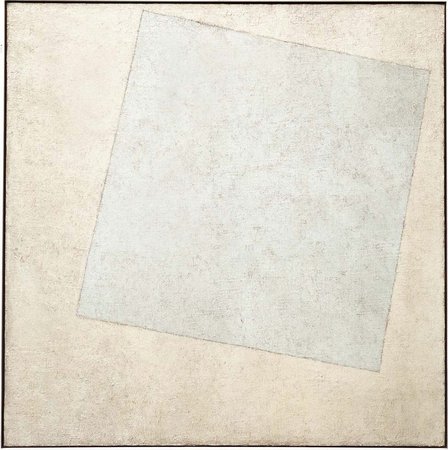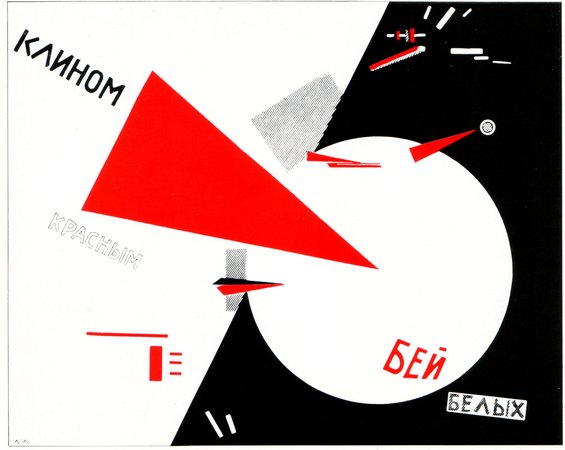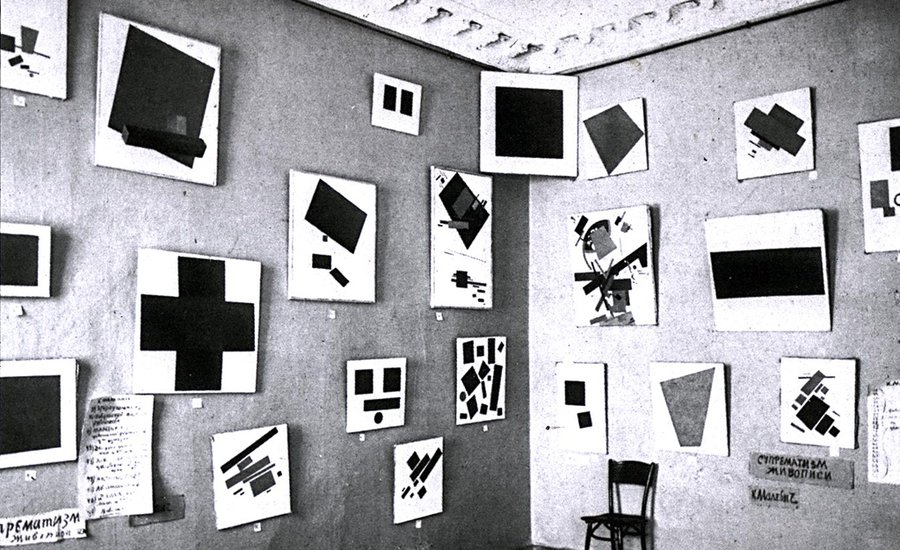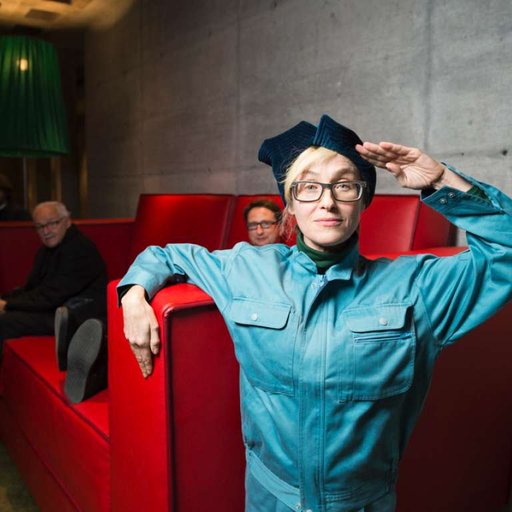Suprematism—the Russian avant-garde art movement spearheaded by the painter Kazimir Malevich—is often credited as one of the earliest instances of “pure” abstraction, the geometric approach that came to define modern art. But how did it all start? In this excerpt from Phaidon'sArt in Time, we take a look back at the surprisingly spiritual roots of this revolutionary period of art history to see how Malevich and his contemporaries sought to free themselves (and their art) from the messy detritus of the figure and the real world itself.
At an exhibition entitled “0.10” (“Zero Ten”) in St Petersburg in 1915, Black Square (completed in 1913), the first Suprematist work by Kazimir Malevich (1878–1935), hung in the corner of the room, the traditional setting for an icon in an Orthodox Russian home. The artwork was a square canvas painted black. Malevich claimed in 1927 that in works such as this, he was trying to “free art from the dead weight of the real world.” In rejecting narrative subject matter, Malevich chose to ignore both current political events and traditional religious imagery, replacing both with a search for something beyond the physical world. His extreme form of abstraction asks the viewer to meditate on the qualities of form and paint and glorifies these as spiritual in and of themselves.
 Kazimir Malevich's Black Square, 1915
Kazimir Malevich's Black Square, 1915
Malevich, who had come to Moscow from Kiev in 1904, had been part of a group of Russian artists there, including Natalia Goncharova and Mikhail Larionov. Inspired by Cubism and Futurism, they experimented from 1910 with the dissolution and fragmentation of form, often combining this modern technique with traditional folk imagery, producing a version of the European avant-garde that was distinctly Russian and related to the work of Der Blaue Reiter. However, Malevich quickly developed beyond this inherently representational style. Seen as a complete purification of art, Suprematism reduces form to its essential qualities—geometric shapes, the simplest of which is the square—and removes the distractions of descriptive color. Many Suprematist paintings include multiple geometric forms, carefully and precisely placed so that they appear to float and overlap on a white background, lending the canvas an ethereal quality. This was important, for Malevich was opposed to the Constructivist ideals of his one-time friend Vladimir Tatlin, who saw art as functional and rooted in the material world.

In his “White on White” series, painted after the 1917 Bolshevik Revolution, Malevich took his ideas to their logical conclusion. A white, slightly asymmetrical square floats across an off-white background, the painterly surface seeming to oscillate and shimmer. The varying tonality of the white paint and the positioning of the square prevent this from being a static, coldly calculated composition. Instead, the involvement of the artist can be clearly seen in the brushwork. The edges of the canvas do not act as constraints, but seem to represent infinite space, in which the overlaid square is free to move. Although the “White on White” series might initially appear to have nothing to do with the “real world,” Suprematism can be seen nevertheless as a means of reaching for the utopian ideals that were offered by the 1917 revolution. In removing specific subject matter from his art, Malevich freed both painting and its audience from the constraints of objective meaning—a form of revolution in itself.
 El Lissitzky's Beat the Whites with the Red Wedge, 1919
El Lissitzky's Beat the Whites with the Red Wedge, 1919
Malevich had two pupils—Nikolai Suetin and Ilya Chashnik—and in 1922, all three were employed by the state porcelain factory (later renamed the Lomonosov porcelain factory), where their designs were integrated into the form or decoration of tea services and plates. The proletarian ideals of the factory lent Suprematism a function within the real world that fit neatly with its ideals for personal spirituality.



























